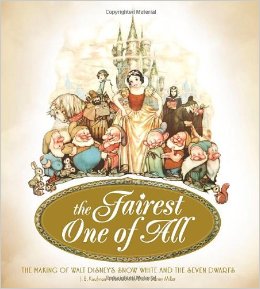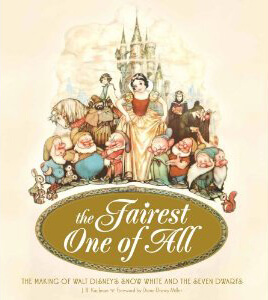The Fairest One of All – Book review and Competition
In recent years animation books seem to have been commissioned thick and fast, with the Pixar feature films, amongst others dominating animators bookshelves with their luxuriously detailed Art of selections as well as tomes that dedicate themselves to demonstrating the minutia of animation technique and practice.
Way back in 1934 there was no such industry as the first commercial feature film that would appeal to the masses was in its finishing stages of production. I am of course talking about Snow White and the Seven Dwarfs and the newly released book that takes us through its history ‘The Fairest One of All’ written by J.B. Kaufman.
The first thing that the film did back in the 1930s was impress, and in the style of the film the book accomplishes very much the same thing from the moment you lay your hands on it, peel away the dust jacket to discover an incredibly detailed layout painting of the Dwarves cottage in all its glory. Turn the pages and you get an in depth history of the film that delves a lot deeper into the film than you would anticipate. In fact we start with the conception of the fairy tale by the brothers Grimm before we are introduced to the many incarnations of the tale that had been adapted for stage and screen. Including the one that a young Walter Elias Disney first saw when he was a paperboy.
The history of animation is detailed too, with previous incarnations of the story in animated form touched upon, the author does not spare any detail as you find yourself fascinated with every nugget of information you are offered (Betty Boop, was redhead, who knew?) as we journey towards the story of the actual films production. As you can imagine that is just as well informed as previous sections of the book. Once particular nicety is the way that each character gets a part devoted to them, we hear the story of each Dwarf as they worked their way through production and we see the process through artwork ranging from scribbles and ideas to more lavish pictures.
As the book comes to a close we see a little of the legacy that the film created. The company never functioned the same afterwards as it grew and grew which demonstrate what an incredible production this was. The book also offers an incredible asset to anyone wishing to take a deeper look at the film, a detailed ‘Whos who’ from each scene in the film so you can see exactly which animator animated which bit, who voiced who and who directed which bits.
I doubt there will ever be a book that covers the detail of Snow White in quite as much depth as this book in quite such an entertaining and enjoyable way. This book is as page turning as it is lavishly decorated with beautiful and exclusive artwork that demonstrates what a turning point in animation and motion picture history the film was.
Items mentioned in this article:



